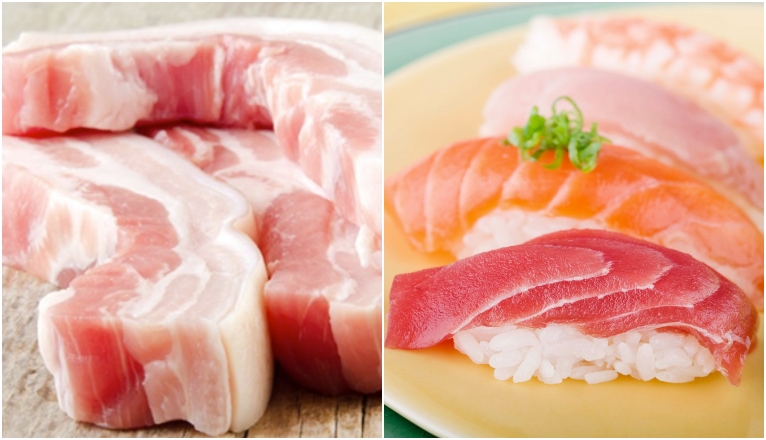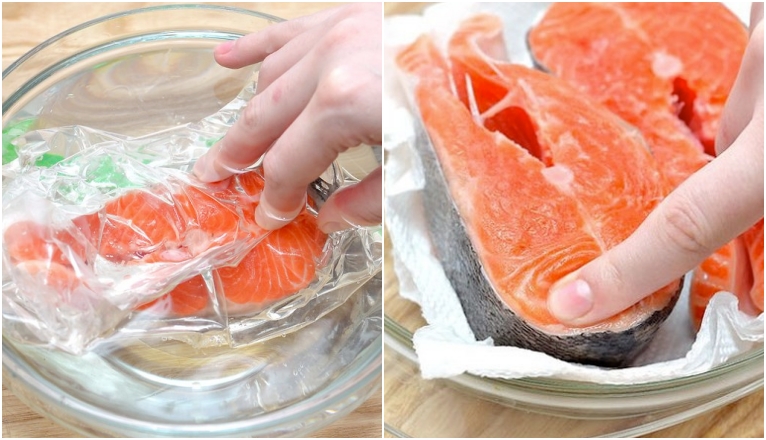Soaking clams, mussels, and other seafood in warm water at 50°C for a few minutes is an effective way to ensure they release any sand or grit. This simple yet ingenious method is just one of many food preparation tips shared by Mr. Kazumasa Hirayama, a representative of the Japan Food Cooking Technology Research Association. But it’s not just seafood that benefits from a warm water bath.
As Mr. Hirayama explains, washing vegetables and fruit in warm water at 50°C can bring them back to life, making them look and feel fresh and crisp. This technique is especially useful for reviving wilted greens and slightly aged produce. The science behind it is fascinating: 50°C happens to be the temperature at which plant cell membranes remain intact but open up to absorb water, resulting in plumper, juicier, and more vibrant-looking vegetables and fruits. It’s like giving them a spa treatment!
 Rinsing produce in warm water is more effective than cold water.
Rinsing produce in warm water is more effective than cold water.
But the benefits of warm water don’t stop there. Meats and fish also benefit from a rinse in 50°C water, as it helps remove oxidized oils and fats from their surfaces, making them taste fresher and last longer. Even sashimi, a Japanese delicacy of raw fish, can be enhanced by a quick dip in warm water to bring out its delicate flavors without cooking it.
Another handy application of 50°C water is in defrosting frozen meats, fish, and poultry. This temperature is ideal for quickly and safely thawing foods without compromising their quality and flavor. To achieve the perfect 50°C water temperature, simply mix equal parts of hot water (around 100°C) and cold tap water (about 20-25°C). It’s a simple trick that can make a big difference in your food preparation routine.
Mr. Hirayama’s insights offer a fascinating glimpse into the world of culinary science and provide practical tips that anyone can use to improve the taste, freshness, and longevity of their ingredients. So, the next time you’re preparing a meal, remember that a little warm water can go a long way!
1 Effective Sand Removal from Seafood
There are various methods to clean seafood, such as soaking in water with chili or vinegar. However, Mr. Kazumasa Hirayama recommends a much simpler and highly effective technique: soaking clams and mussels in warm water at 50°C for about 5 minutes. This temperature ensures that even the most stubborn sand and grit are released from the shellfish.

2 Reviving Wilted Vegetables and Fruits
It may sound surprising, but soaking vegetables and fruits in warm 50°C water can bring them back to life! A restaurant in Japan has successfully applied this technique, and the results are impressive. Within just 5 minutes, wilted greens and slightly aged produce look and feel fresh again.
Mr. Kazumasa Hirayama explains the science behind it: 50°C is the temperature at which plant cell membranes remain intact but open up to absorb water, resulting in plumper and juicier produce. This process also helps remove dirt and tiny insects more effectively. Additionally, warm water enhances the sweetness and ripeness of fruits after 2-3 days of refrigeration.

3 Enhancing the Taste and Freshness of Meat and Fish
The benefits of warm water extend beyond produce to meats and fish. Rinsing these proteins in 50°C water improves their taste and prolongs their shelf life. The warm water effectively removes oxidized oils and fats from the surfaces of meats and fish, making them taste fresher.

Mr. Hirayama also recommends washing sashimi in warm water. This enhances the flavor of the raw fish without cooking it or altering its delicate texture.
4 Safe and Efficient Defrosting

50°C water is the ideal temperature for defrosting frozen meats, fish, and poultry. It quickly and safely thaws these foods without compromising their quality and flavor. This temperature ensures that the food remains in the safe temperature zone during the defrosting process.
To achieve the perfect 50°C water temperature, simply mix equal parts of hot water (around 100°C) and cold tap water (20-25°C). It’s a handy trick to have up your sleeve!
These insights from Mr. Hirayama offer a fascinating glimpse into the world of culinary science and provide practical tips to elevate your food preparation game. So, embrace the power of warm water and unlock new levels of freshness and flavor in your kitchen!






























